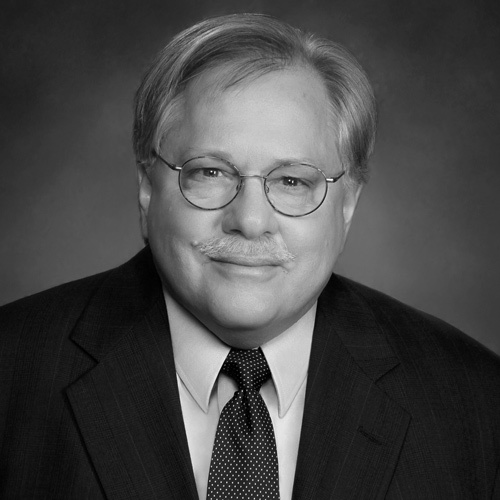Today, Target Field is a diamond of green that, outside of game days, is a tranquil foil to the city of Minneapolis around it. Looking at it, you wouldn’t imagine that it took 13 years of contentious negotiations to build.
Challenges to secure state funding, disagreements over land rights and costs, logistical problems concerning the location of adjacent highways and rail lines, and threats by Major League Baseball to relocate the field’s home team were all part of the origin story of the Minnesota Twins’ new baseball diamond.
For the last four years of the battle—from 2006, when the state signed the enabling legislation, until 2010, when the ballpark opened—Twins vice president and general counsel Mary Giesler was focused on the end goal: getting her beloved baseball team into a new home. At the time, Giesler was a partner at Kaplan, Strangis and Kaplan in Minneapolis. The team was one of her biggest clients, and she negotiated and prepared many of the agreements for the ballpark. “Well over 100 individual documents had to be produced, and all of them crossed my desk,” says Giesler. “This project was what I
focused on 24-7 for those four years.”
Outside the Office
What does Mary Giesler do on her days off?
“I go to baseball games,” she admits with a laugh. “I was a Twins season-ticket holder before I got the job and continue to be one today.” Growing up in Aitkin, Minnesota, her family listened to Twins games on the radio, and if one was on, her father wouldn’t leave the house until it was over. “He would be over the moon to know I have this job.”
The field today is a LEED-certified, open-air ballpark with 200 radiant heaters around which fans congregate in the spring and fall. Under the natural-grass playing field, 41 miles of heated tubing are installed to make spring games and practices possible. It features an irrigation system that saves two million gallons of water annually. The year it opened, ESPN the Magazine ranked Target Field as the number one baseball stadium experience in North America.
If You Build It, They Won’t Leave
The team lobbied the state for years to help fund a new ballpark, but it wasn’t until Major League Baseball threatened to relocate the team that state legislators agreed.
The ballpark’s budget, which included the land, ballpark, infrastructure, and fan amenities, started out at $480 million and was later increased to $555 million. Hennepin County was responsible for $350 million (including $90 million for infrastructure costs), and the Twins contributed $195 million. Target Corporation, which bought the naming rights for 25 years, the Minnesota Department of Transportation, and the Minnesota Ballpark Authority added funds to the pie. To pay its part, the county issued bonds, then retired the principal and interest from a specifically approved 0.15 percent sales tax. “This project was übercomplicated,” says Giesler. “The field is literally built over and around a federal highway, railroad tracks, and a light rail station. There are horizontal and vertical land rights. In fact, the vertical survey includes 114 individual tracts within the ballpark property, with layer upon layer of interests and agreements. It’s crazy.”
Negotiating to move railroad tracks to make way for the field was one layer, but to build a pedestrian promenade above the tracks, the project’s construction manager had to also consider train schedules to work out when building could take place.
Whose Domain?
Another difficulty was that none of the parties involved in the project owned the site. “The landowners thought it was worth more than the county did,” Giesler says. “The only way to get around that and proceed was for the county to condemn the property.” The negotiators reached a settlement, and the Twins agreed to contribute additional funding for non-land infrastructure costs.
Because the park would be a public space, and the baseball team is a private company, the state created the Minnesota Ballpark Authority to oversee the field’s design, construction, and operation, as well as ensure public funds were used wisely. The legal terms of ownership are nuanced. The ballpark authority owns the land, and the team is the tenant in a 30-year lease. The tenant is responsible for the operation of the facility, which includes procuring service providers, vendors, concessionaires, and cleaning crews for Twins games and special events held throughout the year, such as concerts, high school and college games, and
business meetings.
Beyond the Diamond
The public-private partnerships that made the ballpark possible were also part of Target Field Station, a $79 million development that opened in June 2014. It encompasses a transit hub that serves 500 trains each day, a public plaza, a 1,000-seat amphitheater, a green space, office space, a parcel for future commercial development, and a 286-spot underground parking garage. And it’s all adjacent to Target Field.
Ten public entities and three private groups—the Twins, Target, and United Properties (which is owned by the family that owns the Twins)—contributed to the project. Hennepin County owns the property, but the Twins are responsible for the upkeep and programming. There are separate agreements covering the operation and maintenance of the other components, such as the light rail and commuter rail areas, the parking garage, and the bicycle path. “The coexisting responsibilities among public and private entities for the different transit and public gathering spaces is very unique,” says Giesler.
Construction took three years, “but, oh, was it worth it,” says Giesler. After moving to Minneapolis in 1961, the Twins, and Giesler, finally have a home built specifically for them.

